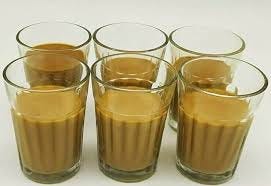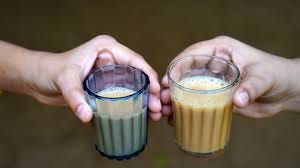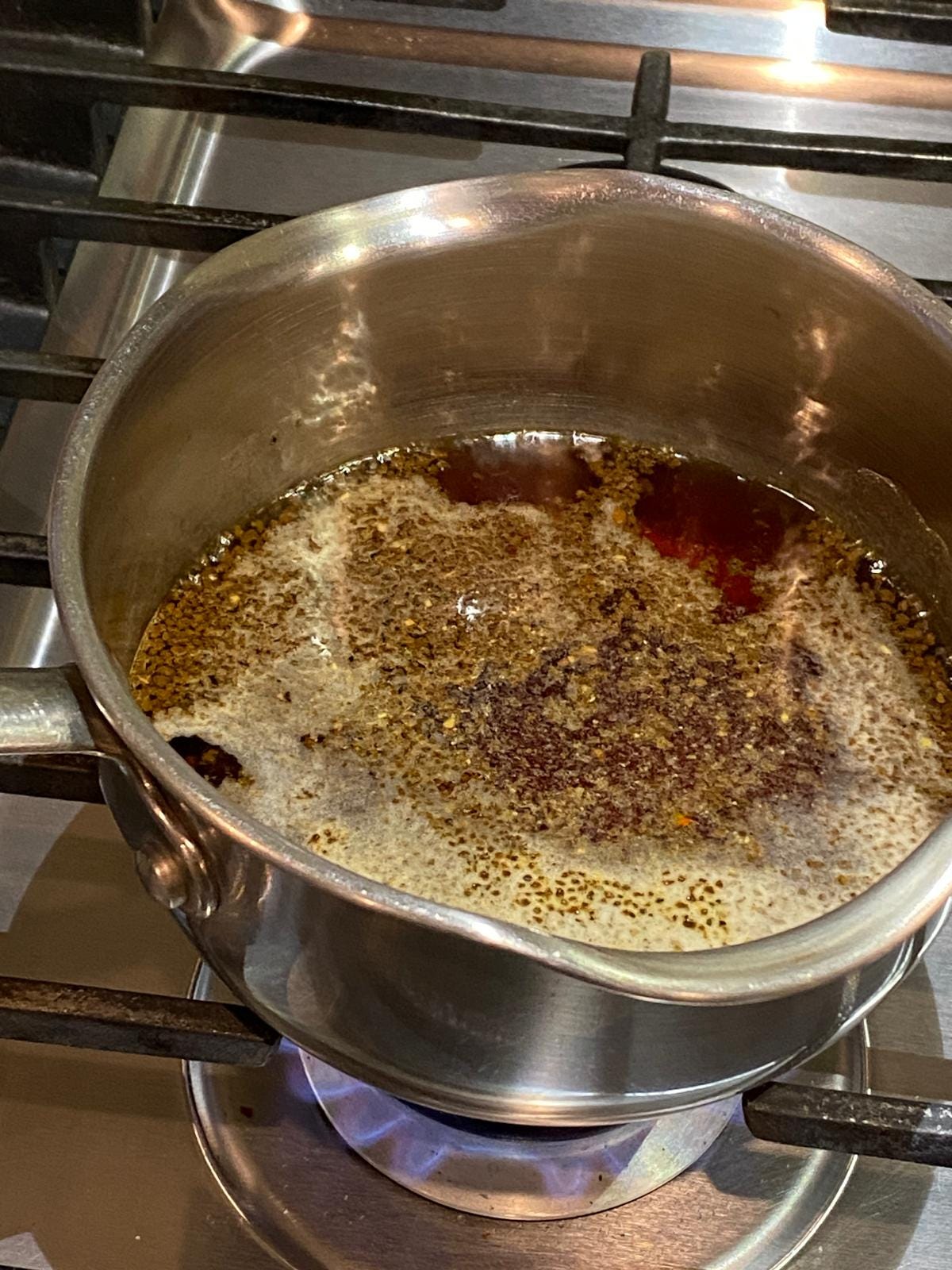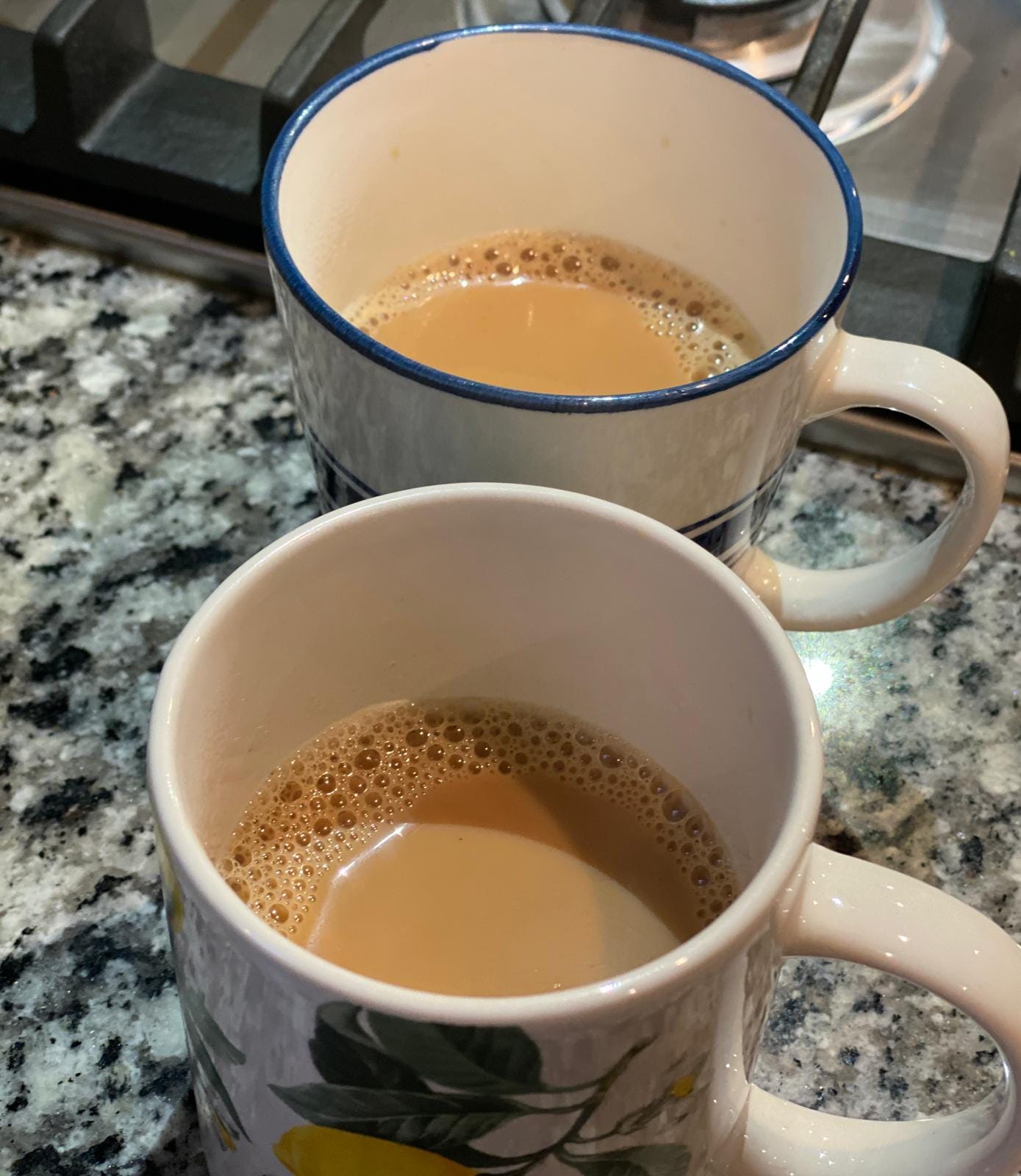Once in a blue moon you come across perfection and an apt summation of your closeted feelings while surfing mindlessly on the internet.
Chai tea is a waste of breath, just say chai, or else …. Not to mention a certain corporate behemoth who has taken this travesty one stage further and named masala chai as chai tea latte.
This is a surprise post brought on by the last meal - Bombay Sandwich. Masala Chai is a beverage most commonly enjoyed with this sandwich.
Water and milk boiled to death with loose black tea leaves and sugar is chai. Addition of ginger – fresh or dried and powdered, mint, green cardamom, cloves, cinnamon or chai masala (a special spice mix for chai containing all the above and more) makes it masala chai. As you can imagine, chai is prepared in dizzyingly different ways in Indian households.
But on the streets of Mumbai, cutting chai reigns. It is the same masala chai but served in teeny tiny, 3-4 oz glasses. Chai is the national beverage that rules the Indian heart, but cutting chai, sold on roadside stands, bicycle carts, cafes and even city trains, is a uniquely Mumbai phenomenon - so entrenched in the local consciousness that it is called just “cutting.” “Ek cutting dena” is the chant often heard - it means give one cutting chai.
Cutting chai is just enough chai to snap you out of the afternoon slump or sick-of-the-work blues. Sipping the spiced, sweet, milky beverage, even perfect strangers are drawn into a conversation, while they grab a respite from the crushing pace of the metropolis.
You must understand that cutting chai is less about chai than hanging out, chilling, breaking routine or just because. Bored – let’s have a chai, meeting running long – get chai, India won the cricket match – celebrate with chai, India lost – all the more reason to have chai, life sucks – chai to the rescue, life is great – bring the chai for everybody with pakodas.
RECIPE - MASALA CHAI
This is the kind of chai made every day, several times a day, in Indian kitchens, even in 100 degrees Fahrenheit stifling heat. Yes, we love chai that much.
Ingredients
2 cups water
1/2 cup milk (full fat or 2%)
1.5 teaspoons sugar (optional)
2 black tea bags or 1.5 teaspoons loose black tea leaves
1 teaspoon peeled, grated ginger or 1/4 teaspoon powdered ginger
1/2 teaspoon chai masala or in the absence of chai masala, 2 green cardamoms and 1 inch piece of cinnamon
Makes 2 cups
Method
Heat 2 cups of water on medium heat in a thick-bottomed pot. Add 1.5 teaspoons sugar, 1 teaspoon grated and peeled ginger, 1/2 teaspoon chai masala.
Once the water comes to a boil, add 1.5 teaspoons tea leaves or 2 tea bags. After the tea-infused water comes to a boil, add 1/2 cup milk.
Let this mixture come to a vigorous, rolling boil. The more you boil, the more you will taste the flavors of tea and spices. If you don’t like strong chai, stick to a single boil.
I’ve seen chai connoisseurs allow for several rolling boils. Turn the heat to low once the level of chai rises during a rolling boil. Chai will simmer down. Then increase the heat to make it come to a boil again. Repeat 3-4 times for a strong chai. Increase the amount of water to 2.5 cups and milk to 2/3 cup to accommodate several boils.
Turn the heat off. If you are using tea leaves, you will need to run the chai through a strainer to catch the loose tea leaves. Don’t throw the leaves away. Once the leaves cool down, wash them under running water and drain. Now they’re an excellent nutrient for your plants.
Serve the chai steaming hot. Masala chai tastes excellent with any savory, crunchy item like a cracker or buttered toast.
SHOPPING LIST
(I’ll make a small commission from the purchases made through these links)
I’ll see you next week with a Maharashtrian meal of pithla (chickpea flour stew), bhaat (white rice) and mithbhurkaa (freshly made chile-crisp-like garlic condiment) - a pantry meal for harried days.











I love the story behind this! You've shifted my perspective about chai (and I can't wait to try your recipe!).
Such a great article Annada! I loved learning more about chai and the different ways to serve it. I had no idea about Mumbais “cutting”, is there anything else that distinguishes it from regular chai?